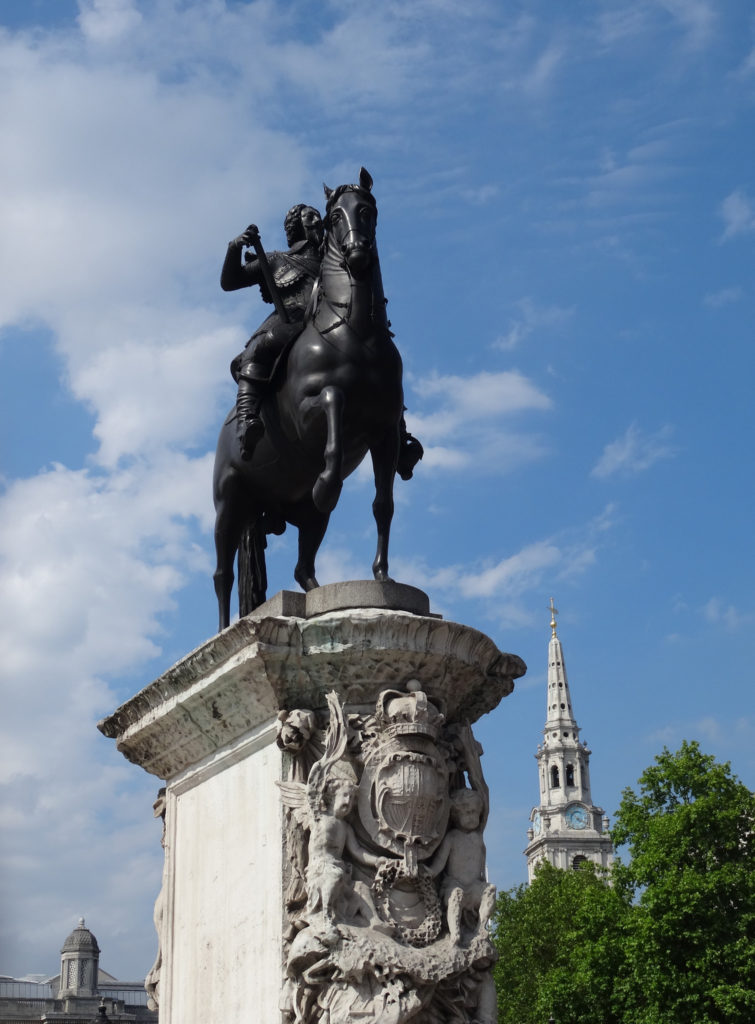I remember being told, many years ago, about equestrian statues and how there was a ‘code’ that sculptors and designers followed. Simply put, if the horse has all four hooves on the ground then the rider died of natural causes. One hoof raised means as a result of injuries in battle. Both hooves raised means the rider died directly in battle. As I was being told this I was looking at a statue of Stapleton Cotton, 1st Viscount Combermere while I was in Chester. Astonishingly, I have no idea how Viscount Combermere died, be it in battle, at home or tickled to his demise by nematodes. The statue showed him on a horse that had one hoof raised. Google tells me he died at home….but what of? This obviously requires greater research – fortunately, others have done it for me.
It seems that the code is a fabrication, picked up on by guide books (and, can I also say, local guides in Chester) to add to our general confusion. Have a look in some guide books and occasionally you will find the code mentioned. It also seems to be more prevalent in North America than it is in Europe. It has been suggested that the code holds true for all six equestrian statues in the Gettysburg National Military Park. Interestingly, the statue of General Reynolds (who died in battle) has two hooves raised, but not the front two, as you can see from the photo. Someone else will need to check this for me but it could be coincidence or this could be where the code started.
A quick look at some of the more famous equestrian statues in London allows me to debunk the myth further. In fact, it was pretty short work. The first I thought of was Charles I (Whitehall), which shows him atop a horse with one leg raised off the ground. Charles I was beheaded (he certainly died as a result of this) but that was not in battle. It was at the end of the English Civil War, true, but the beheading was not done in battle. There is one other aspect which brings the code into question – the statue of Charles I was created in 1638, he died in 1649. That is probably more conclusive than the ‘in battle/result of battle’ bit. Either way, there is a nice story attached. The sculpture had not been erected when the English Civil War began so it was sold to a brazier called John Rivet. Rivet had the statue melted down and turned into knives and forks, which he sold. These relics were readily purchased by supporters of Charles as a memorial – and by opponents of the king as a sign of victory. However, following the restoration of the monarchy in 1660, it was found that Rivet had lied and the sculpture had been hidden away. It was retrieved from Rivet’s backyard and presented to Charles II (the imaginatively named son of Charles I). What happened to Rivet I am not sure, neither am I sure just how big his backyard was, but we must assume it was spacious.
Of course, the code might have been introduced after the English Civil War, but that would have ruined the chance to share an amusing tale. So, I think we are left with the conclusion that all hooves on the ground means the sculptor is not highly skilled in the underside of hooves while two in the air suggest greater skill in the sculpting of not just hooves but the forward abdomen of a horse.
Add Paul on Google+
(Editor’s note: Paul Mattesini’s posts appear Tuesdays on Following the Equator. If you have a travel question for our resident expert tour director, or an idea for a blog post topic, you can email Paul here, and he will answer readers’ questions in future posts.)
Related articles

